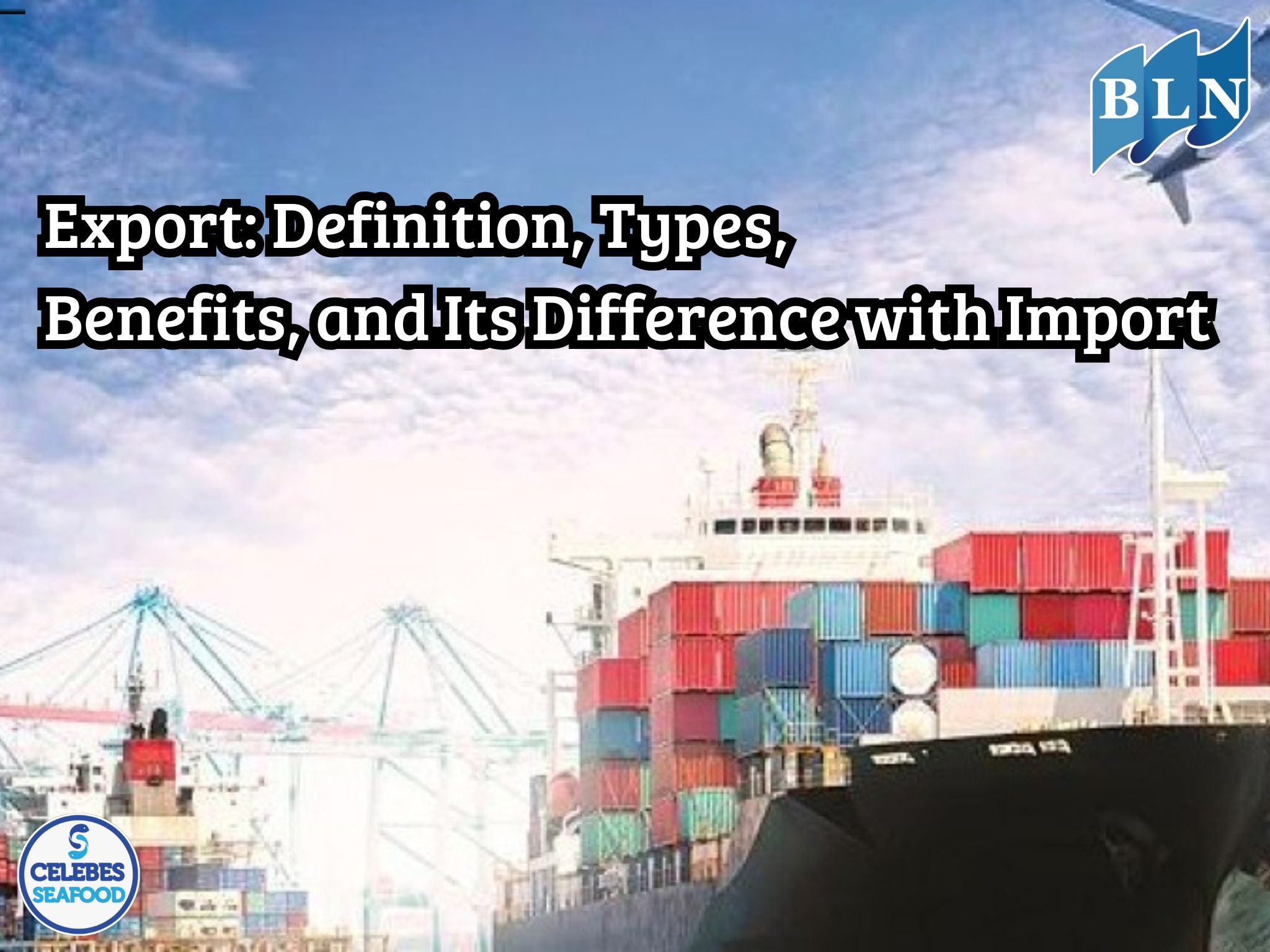Export: Definition, Types, Benefits, and Its Difference with Import
By. Rani - 19 May 2025
lautnusantara.com Export is any activity of buying and selling products from one country to another to fulfill daily needs. The implementation of exports is part of the realization of economic principles aimed at generating profits from buying and selling and controlling the prices of goods in the market. Together with imports, export activities build the international trade balance. With trade beyond geographical boundaries, a country's economy can grow. As an active player in international trade, Indonesia's export value in 2023 was recorded at USD 258,774.4 million. Considering the important role of exports for the national economy, it's essential to first understand some important aspects of the process in the discussion below.
What is Export? Export is a buying and selling activity between countries that plays a significant role in helping the government shape diplomacy and foreign policy. Simply put, export is the trade of products carried out from within the country to foreign countries to meet global market needs. Every producer, distributor, and consumer involved in the export process has their respective rights and obligations according to their role. Stakeholders in export activities need to ensure that products can be produced during the period agreed upon with consumers in other countries. Product shipments are also regulated according to the terms and costs agreed upon by the governments of the exporting and destination countries.
Types of Export Broadly speaking, exports are divided into two based on their procedures: direct and indirect. Here's a brief explanation:
- Direct Export Direct export is carried out without intermediaries. In other words, producers directly conduct buying and selling transactions with foreign companies abroad. The implementation of direct exports can involve foreign sales agents, retailers abroad, or domestic trading companies operating abroad.
- Indirect Export On the other hand, indirect export involves intermediaries in the process. Producers need distributors who have the responsibility of carrying out shipments. Several types of intermediaries that can assist export activities include export companies, cooperatives, export agents, and commission agents. Read also: Trading Company Income Statement: How to Create & Example
Read Also : The Impact of Plastic Pollution: A Bleak Future for Fish in Polluted Seas
Benefits of Export In general, export is an economic activity that increases a country's foreign exchange reserves. Moreover, exports tend to reduce the cost per unit through the utilization of economies of scale. Companies involved in the export sector are also able to gain new experiences and insights that can support domestic innovation. In more detail, some of the benefits of exports that can be felt by the country and business actors can be summarized as follows:
- Reaching a Wider Market Buying and selling can take place optimally if high demand is also balanced by optimal product supply. However, not all goods or services have high demand in a particular region. Nevertheless, this is not a problem with the availability of an export system. In addition to increasing foreign exchange, exports can also help domestic businesses to have a wider market reach. With target consumers in various target countries, exporters can optimize revenue and develop their businesses.
- Controlling Domestic Goods Prices Excessive product stock within the country can lower prices. When product prices are low, the sales revenue obtained by sellers is not optimal. To maintain optimal income and avoid losses, businesses can sell their products to external parties who need a similar supply of products. This export system can help control product prices in the market and ensure that the inflation rate remains controlled.
- Creating Job Opportunities For the community, the export business opens up job opportunities that can have a positive impact on household economies. When production needs increase, companies will require more workers to ensure that production targets are achieved. In this way, the community can independently support their economic needs and actively participate in the movement of the country's economic engine. Read also: Production Costs: Definition, Elements, Types, and Examples
Export Cost Components To ensure the implementation of export activities, a breakdown of certain costs is required according to the needs. Here are some components included in export costs:
- Cost of goods sold.
- Packaging costs.
- Warehousing costs.
- Transportation costs to the port.
- Shipping costs (freight).
- Bank payment fees.
- Export document processing fees.
- Export duty.
- Terminal handling charge (THC).
- Sales agent commission.
- Insurance costs.
- Other costs.
Differences Between Export and Import Export and import are certainly familiar terms in the world of trade. Both have different procedures. Export is the activity of buying and selling from within the country to foreign countries, while import refers to products sold from foreign countries to within the country. In summary, the differences between export and import can be described as follows:
|
Export |
Import |
|
|
Seller |
From within the country |
From abroad |
|
Buyer |
From abroad |
From within the country |
|
Fees |
Involves export duty |
Involves import duty |
|
Goods Grouping |
Divided into three categories: |
Goods are grouped into red, |
|
Free Export Goods, |
yellow, green lanes, and |
|
|
Restricted Export Goods, |
priority/non-priority MITA. |
|
|
Prohibited Export Goods. |
Ekspor ke Spreadsheet
Those are the important aspects of export, which is a significant contributor to the country's foreign exchange reserves. Exporters can also help provide job opportunities and have a positive impact on the community. The utilization of exports is regulated in Government Regulation Number 29 of 2021. Trade activities from Indonesia to foreign countries must refer to the provisions in these regulations.
If you are interested in our product SWEETLIP SKIN-ON, SWEETLIP SKINLESS TIGER please do not hesitate to contact us through email and/or whatsapp.
 Extreme Deep-Sea Vent Inhabitant.jpg)







